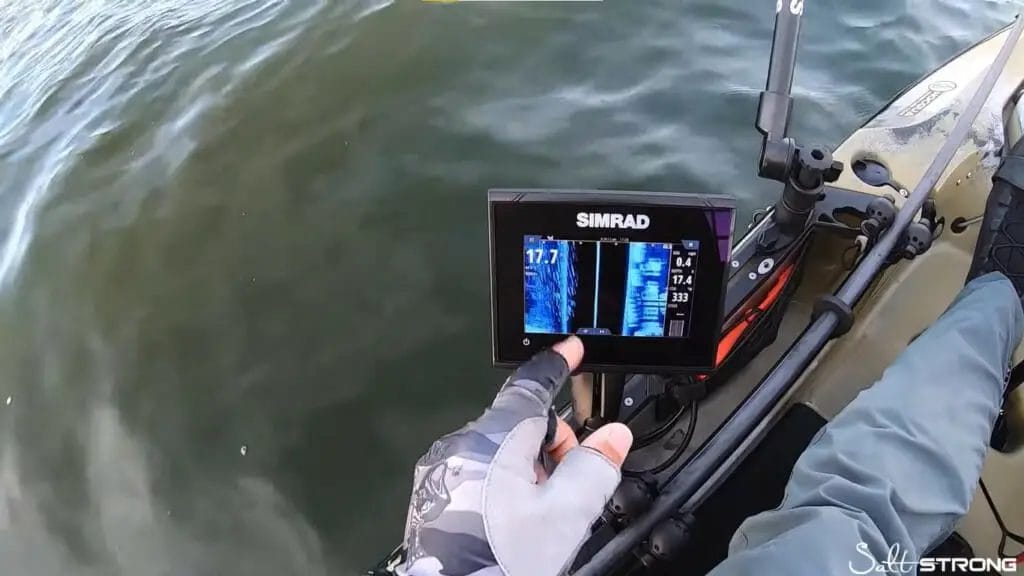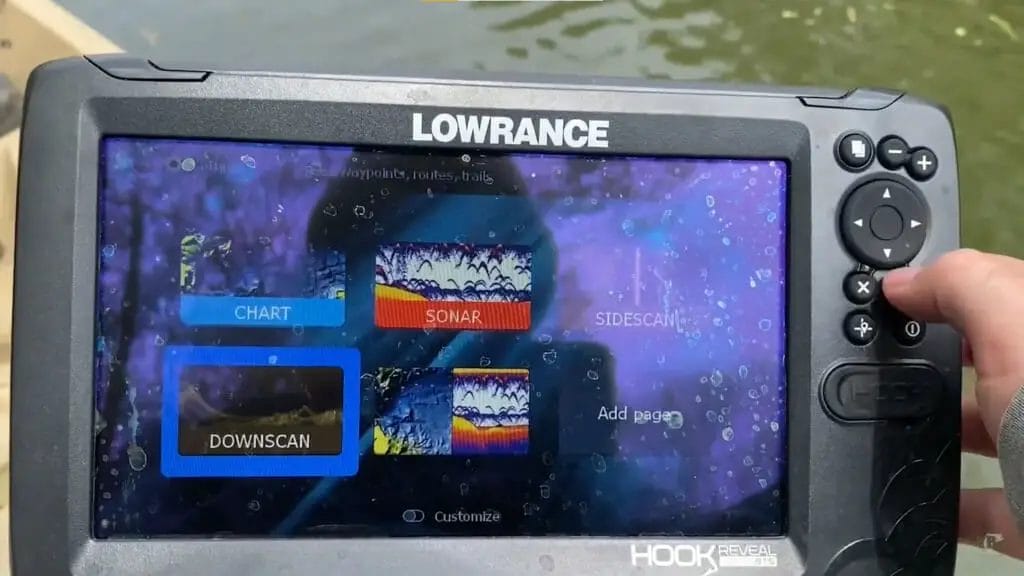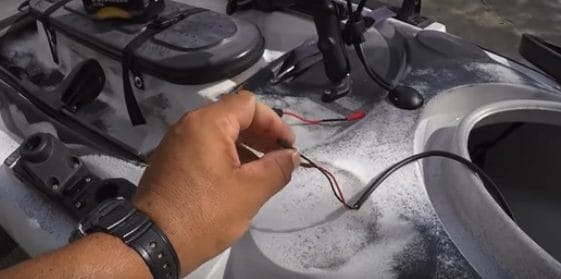Where Does the Fishfinder Transducer Go on a Kayak?

Fish finder mount kayaks have changed the game for many kayak anglers, but where exactly should you place your fishfinder transducer?
The location of the transducer depends on the kayak you’re using.
- For fishing kayaks, it’s best to place the transducer close to your seat,
- While for paddle kayaks, it’s ideal for putting it near the front or by the dash system.
You could also choose other locations for the transducers as long as it is visible, easy to reach, and safe from harm.
Get the most out of your fishfinder transducer by learning the best places to install them.
Places to Put a Fishfinder Transducer on a Kayak
There are several common locations where people mount a fishfinder transducer on a kayak:
- On the Bottom of the Hull: This is a common location for transducers because it allows the transducer to contact the water. You can use a transducer scupper mount or an arm mount to attach the transducer to the hull.
- On the Stern: You can attach the transducer to the kayak’s stern using a transducer or arm mount. This location may provide a better view of the water behind the kayak.
- On the Transom: If your kayak has a motor, you can attach the transducer to the transom or the back of the motor. This can be a good location if you use the kayak for trolling.
- On a Removable Mount: Some transducers come with removable mounts that allow you to attach the transducer to the kayak when you need it and remove it when you don’t.
The position of your fish finder transducer depends on the type of kayak you’re using.
The best location to mount transducers for fishing kayaks is close to your seat. This lets you easily see while moving around; it also has the benefit of being easily adjustable with just one hand – a great relief when you cannot put down the fishing pole.

For paddle kayaks, the best locations to place the fish finders are near the dash system or toward the front of the kayak.
This keeps the mount transducers out of the way when you’re paddling out into the water. Moreover, the transducer will display information about the area in front of the kayak, letting you map out the area before approaching it.

Don’t worry if none of the mentioned positions suit your preferences.
You can place the mounted transducer anywhere – provided it is visible, easy to reach, and away from objects that could hit it. It is also good to consider other secondary factors like the portable fish finder’s battery and wiring. Although, some positions may require more work to install as manufactured portable fish transducer mounts may not work.
Factors to Consider When Installing a Fishfinder
There are four main factors to consider when choosing a location for your fish finder GPS combos.
1. Visibility and Adjustability of the Fishfinder Display

Fish finders should easily be seen and adjusted from the kayak’s seat.
Depth finder transducer mounts use SONAR technology to locate nearby schools of fish and the water depth; this information is relayed to the user through the LCD or CRT screen.
You should be able to see all those information without the need to extend or move away from the seat. Ideally, you’ll only need to move your head to see the display. External factors, like the sun’s placement, make the display difficult to see.
This brings us to the adjustability of the portable fish finder.
Fish finders should be within arm’s reach of the user. Most mounts, like the fish finder suction cup, are easy to adjust with one hand. This lets you comfortably tilt or rotate the display while holding a fishing pole.
You can approximate the best locations for the portable fish finder by reaching your arm around while seated.
2. Keep the Fish Finders Away From Harm
Fishfinder GPS combos are built to withstand rough waters durably, but you can extend their lifespan by keeping them away from harm.
Avoid locations where objects can hit the mounted transducer.
If you’re using paddle kayaks, wherein the paddles are on the side of the kayak, then avoid mounting the transducers on the sides. You consider personal habits as well. Avoid places where you could accidentally hit the transducer while casting and moving around.
3. Battery Placement
The fish finders and batteries should be located nearby each other to avoid complicated wiring systems.
The batteries for fish finders are usually stored on the deck, behind, or under the seat. Most kayak users prefer to store them under the seat to keep them safe and out of the way. If your kayak has dedicated pockets or storage locations for batteries, try using those instead. Those pockets often come with insulations and waterproofing for extra protection.
4. Wiring

The wiring depends entirely on the transducer’s placement and battery.
You’ll have to figure out the wiring system since there isn’t a single best way to wire the transducer to the battery.
Fortunately, we have some tips to help you out. Try to implement proper wire management by using zip ties to keep loose wires together and coiling them. Stash the wires in a safe location away from water exposure. Keep them out of your way to avoid accidentally disconnecting the wires.
Take a look at some of our related articles below.
- How to mount a kayak fish finder transducer
- Whitewater kayaks come in all shapes and sizes
- Best kayak fish finder
Video References
Salt Strong
Aaron’s Outdoor
Your Bass Guy
